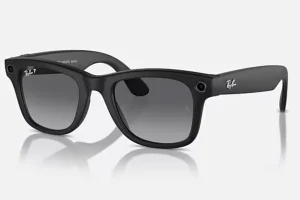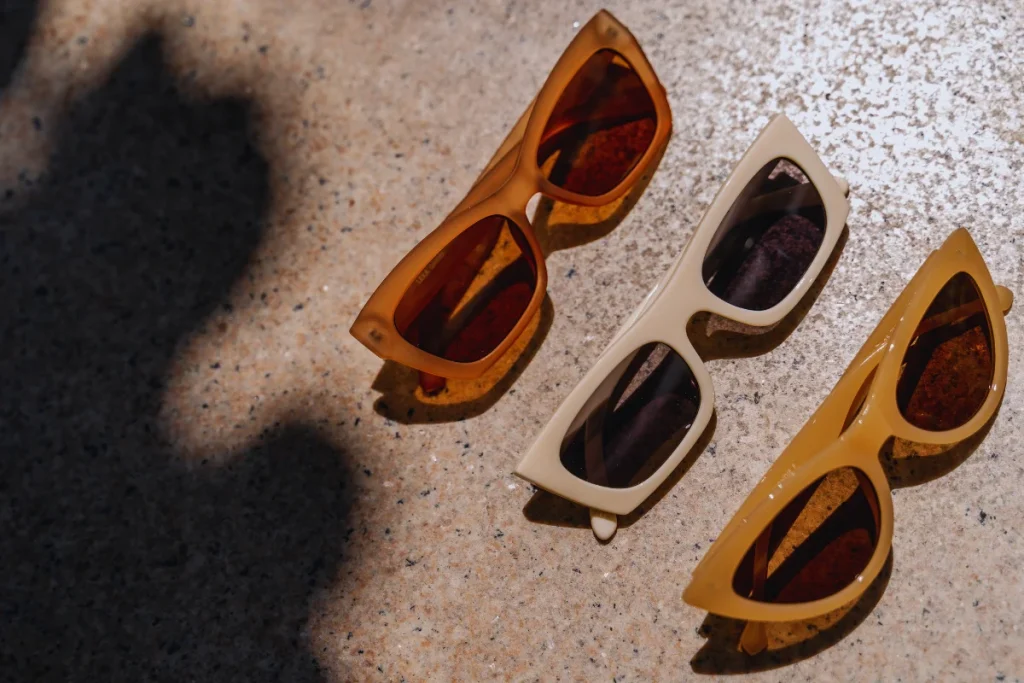Ray-Ban is one of the most iconic names in eyewear. Known for classic styles like the Aviator, Wayfarer, and Clubmaster, the brand has been a favorite for decades because of fashion, comfort and quality lenses.
If you’re buying a new pair of Ray-Ban sunglasses you might be wondering: are all Ray-Ban sunglasses polarized? It’s a common question among buyers looking for sun protection and eye comfort.
Are All Ray-Ban Sunglasses Polarized?
The short answer is no, not all Ray-Ban sunglasses come with polarized lenses.
Ray-Ban gives buyers a choice between polarized and non-polarized options on many of its popular frame styles. So you can choose based on your needs, whether it’s for fashion, everyday wear or outdoor glare protection.
Polarized Ray-Bans are designed to reduce glare from reflective surfaces like water, snow and glass. They enhance clarity and contrast, perfect for driving, traveling or spending long hours outdoors.
Non-polarized Ray-Bans still offer UV protection and stylish tints but don’t reduce glare the same way polarized lenses do.
Ray-Ban offers a wide range of lens types:
- G-15 Lenses: Classic green-tinted lenses that absorb 85% of visible light and offer true color perception. Available in both polarized and non-polarized versions.
- Chromance Lenses: High-contrast lenses designed to enhance color and detail. These are always polarized.
- Gradient Lenses: Darker on top and lighter on the bottom, perfect for fashion and light filtering. Usually non-polarized.
- Mirrored Lenses: Reflective surface to reduce light penetration and add a bold look. These can be either polarized or non-polarized.
So while polarization is a feature you can find in many Ray-Ban lenses, it’s not automatic. You need to check the product details or lens marking before buying.
How to Know If a Ray-Ban Is Polarized
Not all Ray-Bans come with polarized lenses, so it’s important to know how to check before you buy or even after you’ve bought them. Here are a few easy ways to tell if your Ray-Ban sunglasses are polarized:

1. Check the “P” on the Lens
One of the easiest way to tell if Ray-Ban sunglasses are polarized is to check the lens. Most polarized Ray-Ban sunglasses have a small “P” next to the Ray-Ban logo on the top corner of the right lens. If the “P” is there, it means the lenses are polarized.
But not all models use this marking so it’s a helpful indicator but not the only one.
2. Read the Product Description or Label
Whether you’re buying online or in-store, always check the product label, description or box. Ray-Ban usually lists the lens type and if it’s polarized. On their website, look for “polarized” or “P” in the product title or specifications.
In-store, the packaging or tags often mention polarization too.
3. Try a Simple Polarization Test
You can test if your lenses are polarized with a quick DIY method:
- Digital Screen Test: Hold your sunglasses in front of an LCD screen (like a phone or computer). Slowly rotate the sunglasses while looking through one lens. If the lens gets darker at certain angles, the lens is polarized.
- Lens-on-Lens Test: Hold your Ray-Bans in front of another known polarized lens (like another pair of sunglasses). Rotate one lens over the other. If the overlapping area darkens or turns black at a certain angle, both are polarized.
4. Check the Official Ray-Ban Website or Product Packaging
When buying online, especially from Ray-Ban.com or an authorized retailer, the product page will clearly state if the lenses are polarized. Look under the lens options or specifications section.
If you already own a pair and still have the box, the label on the packaging will often include lens type codes. The code “POL” or “Polarized” usually appears on polarized lens models.
Polarized vs Non-Polarized Ray-Ban Lenses
When choosing Ray-Ban sunglasses, one of the key decisions is whether to go for polarized or non-polarized lenses. Both offer UV protection and stylish designs, but they perform differently depending on how and where you use them.

Key Differences in Performance and Visual Experience
- Polarized lenses are designed to reduce glare from reflective surfaces like water, snow, glass, and roads. They use a special filter that blocks horizontal light waves, making your view sharper and more comfortable.
- Non-polarized lenses reduce brightness but don’t block glare. They still provide UV protection and come in a wider range of fashion-forward styles.
The difference is most noticeable when you’re in environments with a lot of reflective light—polarized lenses offer clearer, more relaxed vision in those situations.
When Polarized Lenses Are Better
Polarized Ray-Ban lenses are ideal if you:
- Drive regularly, especially in sunny conditions
- Spend time near water, like boating or fishing
- Enjoy snow sports like skiing or snowboarding
- Are sensitive to light or glare
These lenses make details stand out and help reduce eye strain, making them perfect for active or outdoor lifestyles.
When Non-Polarized Lenses Are Fine
Non-polarized Ray-Bans work well if you:
- Primarily use your sunglasses for style or short outdoor trips
- Spend a lot of time moving between indoor and outdoor spaces
- Use screens often (polarized lenses can distort some digital displays)
For casual use, walking, city life, or fashion-first purposes, non-polarized lenses are often more than enough.
Impact on Price and Availability
Polarized lenses generally cost more than non-polarized ones. The technology behind glare reduction and visual clarity adds to the price, which is reflected in the final cost.
Also, not all Ray-Ban models come with polarized versions, so you may have fewer options to choose from. Non-polarized lenses are more widely available and tend to be included in more fashion-focused collections.
Where to Buy Genuine Polarized Ray-Ban Sunglasses In Dubai
To make sure you get authentic Ray-Ban polarized sunglasses, it’s best to buy from official or verified sources.

Best places to buy include:
- The official Ray-Ban website
This is the safest place to explore all lens options, including polarized models with accurate descriptions. - Authorized retailers
Certified eyewear shops and online sellers often carry genuine Ray-Bans with warranties and clear lens information.
Tips to avoid fakes:
- Check for the small “P” next to the Ray-Ban logo on the right lens
- Look for proper model and lens codes on the inside of the frames
- Be cautious of very low prices or websites without clear contact details
Always check lens specifications
When shopping online or in-store, make sure the product description mentions if the lenses are polarized. Keywords to look for include “Polarized,” “G-15,” or “Chromance.”
Conclusion
Not all Ray-Ban sunglasses are polarized. Some models come with standard UV-protective lenses, while others feature polarization for glare reduction. That’s why it’s important to check before you buy.
If you spend time driving, outdoors, or around reflective surfaces, polarized Ray-Bans can improve visual clarity and reduce eye strain. They are a practical choice for people who want both style and performance.
On the other hand, if your needs are mostly fashion or light outdoor use, non-polarized Ray-Bans may be all you need.
Choose your sunglasses based on how you live, where you go, and what makes your eyes most comfortable. Either way, Ray-Ban offers trusted quality and timeless style.
FAQs
1. How can I tell if my Ray‑Bans are polarized?
Look for a small “P” next to the Ray‑Ban logo on the right lens—that’s the easiest indicator. You can also hold your sunglasses in front of an LCD screen and rotate them; if the screen darkens, the lenses are polarized.
2. Do all Ray‑Ban lens types come in polarized versions?
No. Ray‑Ban offers both polarized and non‑polarized variants for many models. Popular options like G‑15, gradient, and mirrored lenses may or may not be polarized. Always read the product description carefully.
3. What does the “P” on Ray‑Ban lenses mean?
The “P” stands for polarized. It signifies a built‑in filter that reduces glare from reflective surfaces such as water, snow, and road surfaces, enhancing visual clarity and comfort.
4. Are polarized Ray‑Bans worth the extra cost?
5. Can polarized lenses affect how I view screens?
Yes. Polarized lenses may cause LCD screens—like phones, ATMs, and dashboards—to appear dark or distorted at certain angles, which can affect readability.


